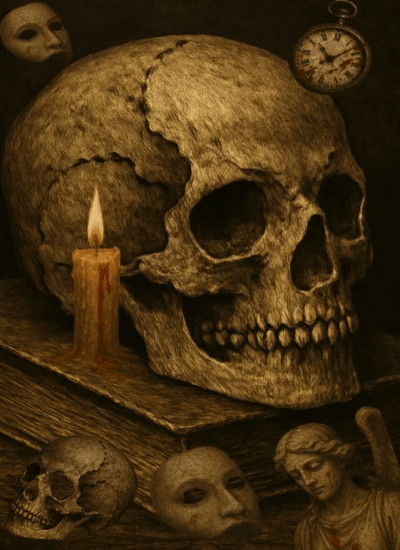
🌒 Macabre Crimes That Time Forgot: From Iron Boxes to Cult Butchers
When you enter the pages of Macabre: True Crimes & Mysteries, you’re not flipping through cold academic pages—you’re entering rooms where the walls still seem to breathe, where blood dried long ago but the shadows never quite left.
From Bangkok’s haunted canals to California’s delta marshes, these aren’t just stories. Below, we spotlight a few of the most unforgettable cases from Volume 1.
🛢 The Iron Box Killer (Thailand)
The water was supposed to wash away the sins.
Instead, it revealed them—sealed inside rusted iron trunks, floating like cursed relics through the khlongs of early 20th-century Bangkok.
In Thonburi, a “monk” named Boonpeng Buaklee claimed to offer divine blessings. What he actually gave his victims was death—slow, ceremonial, and deliberately grotesque. Upper-class women came seeking fertility and love spells. They left this world folded into iron coffins, doused in herbal ash, and dumped like cargo.
He was the last man beheaded in Thailand. But his real legacy? Fear.
Did You Know? Thai children still whisper about “Heep Lek”—the Iron Box—when telling ghost stories. He became shorthand for spiritual betrayal in a land where monks are meant to be sacred.
It wasn’t just the murders. It was where they happened—in temples, in shrines, under the guise of holy ritual. When faith wears the face of the killer, the entire culture flinches.
And some wounds never heal.
🎭 The Children of Thunder (USA)
California’s sunshine doesn’t bleach out madness. It hides it in plain sight.
In 2000, Glen Taylor Helzer—once a clean-cut Mormon missionary—decided God had spoken to him. Told him he was a prophet. Told him to raise money by any means necessary to usher in a new world. So, he started a cult with his brother and a woman named Dawn Godman.
They called themselves The Children of Thunder.
They kidnapped an elderly couple, drained their bank accounts, drugged them with Rohypnol, and dismembered the bodies in plastic sheeting like it was routine. Then they killed a young woman Helzer had dated under a fake name—Selena Bishop—because she’d unknowingly helped launder the money. They murdered her mother and friend too, just to close the circle.
No rage. No frenzy. Just ritual murder in a suburban bathroom, backed by delusion and a five-point plan.
True Crime Trivia: Helzer reportedly kept notebooks describing each victim as a “vessel” to be emptied so their spiritual energy could be “freed.” This wasn’t theology—it was clinical psychosis with a kill count.
🧊 The Dyatlov Pass Incident (Russia)
Nine experienced hikers. One frozen mountain. And a mystery colder than Siberia itself.
In 1959, a group of students vanished during a trek in the Ural Mountains. When their bodies were found weeks later, the scene read like a horror script: tents slashed from the inside, corpses scattered barefoot across the snow, skulls crushed, ribs shattered, tongues missing.
No one agrees on what happened. Avalanche? Secret military testing? UFOs?
What we do know is this: something drove nine rational adults into a panic so profound, they fled into certain death.
The Soviet Union tried to bury the case in bureaucracy. But secrets don’t rot.
Did You Know? Some bodies showed radiation. Others had orange skin and grey hair—signs of extreme exposure or contamination. Conspiracy or coincidence? We still don’t know.
💀 The Station Strangler (South Africa)
In 1990s Cape Town, a predator stalked the townships while apartheid was crumbling and resources were scarce.
Children vanished. Black boys, aged 9 to 13, disappeared near train stations—and were later found raped and strangled, their small bodies buried in shallow graves, their shoes lined up beside them like offerings.
At least 22 victims.
Authorities convicted one man—Norman Afzal Simons, a schoolteacher fluent in 14 languages. He fit the profile: intelligent, solitary, sexually ambiguous. But the evidence was paper-thin, mostly circumstantial. Simons is still in prison, but whispers persist: Was he the only one? Was he even the right one?
This wasn’t just a crime wave. It was a collapse of trust in police, justice, and even the community itself.
Cultural Context: Many in the townships believed the killer might have ties to sangomas—witch doctors—or that the murders had ritualistic significance. In places where spiritual belief is woven into survival, evil wears many masks.
💰 The Heineken Kidnapping (Netherlands)
Not all crimes end in blood. Some end in boardrooms and betrayal.
Amsterdam. Freddy Heineken—billionaire beer tycoon—is yanked off the street and stuffed into a van. Held in a soundproofed cell for three weeks while his captors negotiate a then-record ransom: 35 million Dutch guilders.
The masterminds? A crew of small-time crooks led by Willem Holleeder and Cor van Hout, who used fake police gear, military tactics, and a hideout built like a panic room. Freddy survived—but the money? Mostly gone. And Holleeder? He became the godfather of Dutch crime, ordering hits like he was managing a brewery.
Where Are They Now? Heineken died rich but shaken. Holleeder was sentenced to life in 2019 for orchestrating five murders. His own sister testified against him. Blood money has a long shelf life.
🚨 Want More?

